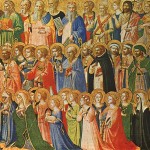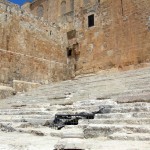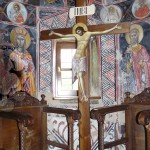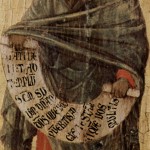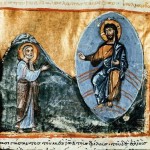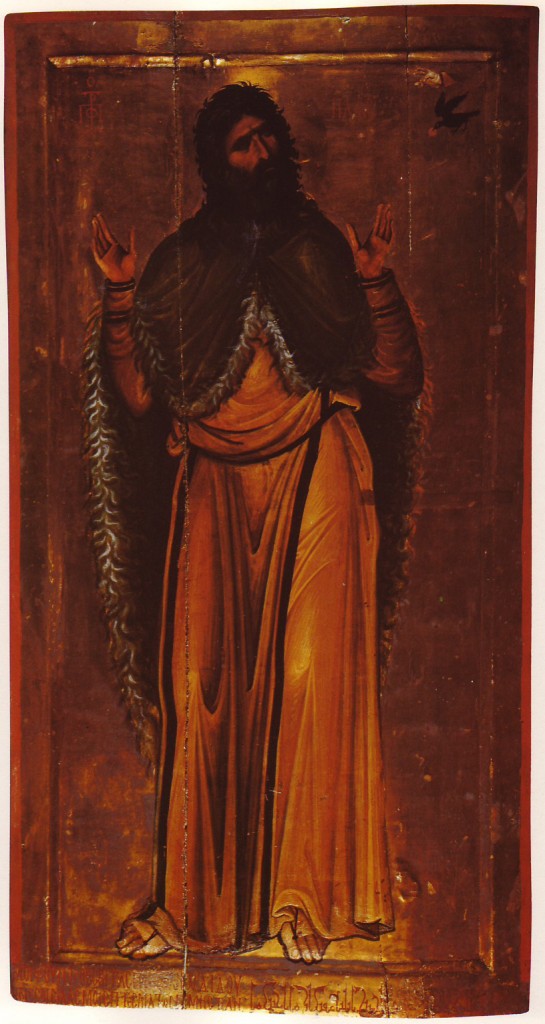
Ruth 3:1-5, 13-17 and/or 1 Kings 17:8-16
What It’s About: These are both passages about provision in times of need, although they are very different in the kind of need, and the way that need gets met. In Ruth, we have a couple of women who are adrift in the world, with no security or safety except each other, and they leverage the one thing they have to work with–Ruth’s sexuality–to find safety and security. In the 1 Kings passage, we meet another widow, one who is in some ways better off and in some ways worse off than Ruth. She’s better off because she has a son, who presumably could help support her eventually; she’s worse off because she has reached the point where she is going to run out of food, and she expects that she and her son will die. She has probably been widowed longer than Ruth had been when her story takes place; it was probably a matter of when, and not if, an unsupported widow would reach the point described in the 1 Kings story. Women without a man to support them had very few options.
What It’s Really About: In the 1 Kings story, we are clearly supposed to understand that a miracle is taking place. The meal in the jar is replenished, despite no one really knowing why. We are supposed to think that God is doing it. In the Ruth story, though, there is not much sign of the divine. It is Naomi’s craftiness, and Ruth’s obedience and willingness to do seduce her kinsman, that really brings about a moment of salvation.
What It’s Not About: I’ve been through enough church fights about things that were said in the presence of children–including things read straight out of the bible–that I understand why the lectionary skips the middle part of the story of Ruth. The part they skip is the sex part. We get Naomi’s instructions to Ruth–“go seduce Boaz”–and we get the results–wedding bells. But we don’t get the middle part, where a little bit of sex and a lot of ancient Israelite deal-making goes on. Ruth sneaks up to Boaz when he is asleep and “uncovers his feet,” with feet being a euphemism for you-know-what. He wakes, is understandably surprised to find a woman at his “feet,” “spreads his cloak over her,” and then enters into some complex negotiations with another kinsman to decide who will “acquire” Ruth. It’s this weird mix of sexual innuendo and the cold language of transaction, and the whole thing is utterly foreign to our experience. That, I am sure, is why the lectionary skips that part in favor of the wedding bells, but we do lose a lot of the story that way.
Maybe You Should Think About: What, exactly, are we supposed to take away from the Ruth story? The 1 Kings story has a clear “moral,” that we should be generous even out of our scarcity. But it’s less clear what the Ruth story is telling us? Have ingenuity? Be crafty? In the text, this gets cast as a story about “loyalty,” but that doesn’t quite capture it for me. What should we take away from this?
What It’s About: I continue to be fascinated by the lectionary’s jaunt through Hebrews, which allows us a chance to see an early Christology played out, bit by bit. This section continues the Christ-as-high-priest motif, and compares aspects of Jesus to things that the high priest did. Note that the author assumes a lot of knowledge on the part of the listeners about what a high priest does: a high priest enters a sanctuary, and offers blood (but not his own) to God. Jesus, by contrast, enters heaven, having offered his own blood. The author of Hebrews doesn’t have as sophisticated a way of explaining this as later theologians did (and this didn’t really get ironed out until the middle ages, in some ways), but you can see here the beginnings of a tradition of interpreting Jesus’ death as a kind of sacrifice–but one in which the one officiating the sacrifice is the sacrifice itself. What we are seeing here is a sermon illustration–one of the first–about how to think about Jesus’ death.
What It’s Really About: If the author assumes that the hearers and readers know about what priests are, and if the consensus dating of Hebrews is correct, then this sermon was delivered to people who also knew that the temple in Jerusalem had been destroyed. This book is normally thought to have originated as a sermon delivered in Rome, where everyone would have known about the triumph of Titus and Vespasian over the rebels in the province of Judea, and about the destruction of one of the great architectural wonders of the ancient world, the Jerusalem temple. So these words about Jesus as a new kind of priest would have carried special significance for them, because they would have heard them in the knowledge that there were no more Jewish priests performing rites in the temple; the temple was in ruins.
What It’s Not About: It’s easy to read this, with two millennia of hindsight, as a triumphalist text, narrating how Jesus took over for an old kind of priests, and his sacrifice for an old kind of sacrifice, and Christianity took over for Judaism. But I don’t think the first hearers would have heard it that way. For them, this would have been an illustration–a way of understanding–that helped them grasp who Jesus was. I don’t think that the preacher/writer was speaking ontologically here; he wasn’t describing the way things really are in some literal way. But he was trying to find ways to make people–probably Jewish people–understand how Jesus fit in to the system they already lived in.
Maybe You Should Think About: It’s fashionable to blast forms of Christianity that are in some ways molded to the culture. There’s no faster way to get people nodding along than to declare, quoting Paul, that we should be “in the world, not of it.” But that ignores the very real fact that all Christianity is molded to the culture around it. There is no pure Christianity; it is always shaped by the people practicing it, and the society they live in, and the customs, symbols, rituals, and images that come from outside of Christian theology. That’s why a Russian Orthodox church in St. Petersburg looks different from a Pentecostal church in Namibia, which looks different from a United Methodist church in Peoria. Hebrews was capitalizing on that inherent culture–the kind of knowledge that the whole group shared–to make a point. Every church does this everywhere and always, and every preacher does this too, whether they want to admit it or not. So, maybe you should think about how the author of Hebrews does it, and if there is anything you can learn from that, to communicate more effectively in your own cultural context.
What It’s About: This is a warning about religious functionaries (scribes), and a corresponding recommendation for the poor, the humble, and the downtrodden. It’s the story of the woman who put her two copper coins into the treasury. Her gift was dwarfed by the large gifts of the rich, but Jesus counts her contribution as “more” than all the rest.
What It’s Really About: This story is in significant resonance with the 1 Kings story above, of the widow who bakes a cake for the prophet out of the last of her meal, and is blessed with miraculously reappearing meal. In this case, Jesus points out that her gift of two copper coins was a significant sacrifice for her, while the gifts of the rich probably wouldn’t even be noticed by them. She was giving sacrificially, while the rich were just giving.
What It’s Not About: It’s surprising that the rich are not condemned here; you might expect, based on what has preceded this story and what follows it, for Jesus to talk about how the rich are giving out of self-interest. But he doesn’t do that. He just notes a kind of proportionality: her gift cost her more than the gifts of the rich cost them. As for the scribes, they bear the brunt of Jesus’ comments about people who mistreat the poor. And just as Jesus was talking about how the scribes oppress widows, the widow walks up with her two copper coins. So the rich come away from this in decent shape–still not as worthy as the poor widow, but not evil either. But the scribes–the elite, religious figures–are the ones who are the enemy in this passage.
Maybe You Should Think About: It might be interesting to point to something in the sermon (assuming that my reader now is a person preparing to preach this text in a church in the USA or Europe). If there is a “scribe” in the room, it is you–the preacher. If there are “rich” in the room, it is likely the congregation, the members of which are economically privileged in exactly the ways Jesus describes “the rich” as being. Who then is the widow? She probably lives in the so-called “two-thirds world,” that part of humanity that has not benefitted from the riches of globalism, colonialism, and exploitation of resources. It would be interesting to point to that, in the sermon–that the poor and the “widows” of the world are really the ones we don’t see every day, and whose contributions we think of as meaningless. What happens to this story when you read it this way?

